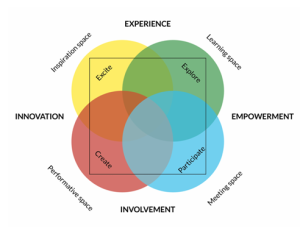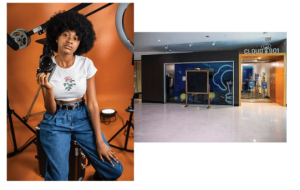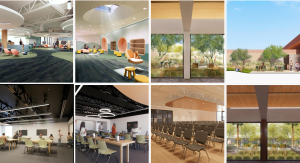Libraries today are living ecosystems, or places where stories, people, and possibilities intersect. Librarianship is at its best when it takes a humanistic approach, one that values people within their unique social and cultural contexts. When we lead with empathy and cultural awareness, we create spaces that inform and empower. This idea echoes humanistic learning theory, which focuses on the growth of the whole individual, meaning the emotional, social, and intellectual sides of learning, not just academic success (Western Governors University, 2020).
Stephens (2019) takes this further with his idea of the hyperlinked library: a model that stretches far beyond the library’s walls to connect with people wherever they are. It is a vision of librarianship that is human, open, and deeply connected to community life. When we look at this model through a global and equity-focused lens, the library becomes more than a place of access; it becomes a model of cultural responsiveness, where librarians actively listen, adapt, and design services that reflect the diverse experiences of the people they serve.
We are seeing this vision come to life in places like the Salt Lake City Public Library, where a new model of librarianship is taking shape. In late 2023, the downtown branch hired its first licensed clinical social worker, Nicole Campolucci, as a social services coordinator (Harkins, 2023). Just like other library employees, Campolucci meets human needs, but in a scope that goes beyond traditional library services. From helping patrons sign up for EBT and access housing resources to offering crisis intervention and mental health support, Campolucci is helping bridge the gap between library services and social services (Harkins).
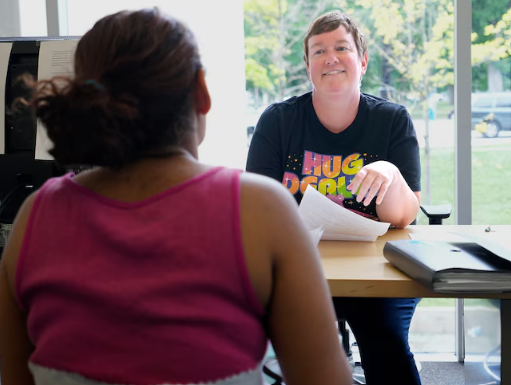
This approach reflects a growing recognition that libraries are among the last truly free, third spaces because they welcome everyone, regardless of circumstance. By integrating social work into the fabric of library life, Salt Lake City is reimagining what it means to serve the community as connectors, advocates, and partners in well-being. It is a powerful example of what happens when librarianship evolves to treat the whole person.
For me, these new models of librarianship are more than just things I am reading about in class, they are personal. I grew up in my local library, first sitting cross-legged at storytime and later, as a first-generation, low-income student at the University of Southern California, finding refuge among its shelves. When I felt out of place, the library grounded me by connecting me to tutoring, quiet study spaces, and a sense of belonging. Now, standing where I once sat, reading to children as the employee leading storytime, I am reminded daily of the library’s power to transform lives.
The humanistic and hyperlinked models reflect what I have experienced in libraries as spaces of connection, care, and growth. Initiatives like the Salt Lake City Public Library’s addition of a social worker show what it means to serve the whole person, or recognizing that information needs are intertwined with emotional, social, and economic realities.
My goal moving forward is to continue breaking down barriers to access and belonging. I strive to be both a hyperlinked librarian and a humanistic one who leads with empathy and care. Ultimately, librarianship is not just about connecting people to information, but it is about connecting them to possibility.
Before leaving this post, I ask that you think about a time when a library made a difference in your life. What did that moment look like, and how did it shape your connection to your community? Then if you are comfortable, share your story in the comments! I would love to hear how libraries have supported your growth and sense of belonging.
Remember:
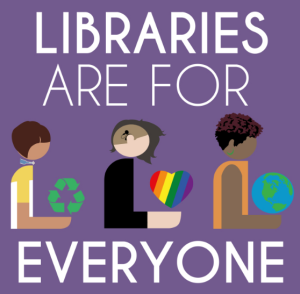
References:
Harkins, P. (2023, June 20). Salt Lake City downtown library’s new social worker has already helped thousands. The Salt Lake Tribune. https://www.sltrib.com/news/2023/06/20/salt-lake-city-downtown-librarys/
Stephens, M. (2019). Wholehearted librarianship: Finding hope, inspiration, and balance. ALA Editions.
Western Governors University. (2020, July 21). What is humanistic learning theory in education? https://www.wgu.edu/blog/what-humanistic-learning-theory-education2007.html
